- Clone
- 8.1.1 (See other available formats)
- Regulatory Status
- RUO
- Other Names
- T1a, gp38, stromal cell marker
- Isotype
- Syrian Hamster IgG
- Ave. Rating
- Submit a Review
- Product Citations
- publications
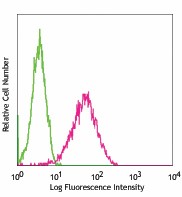
-

TE-71 cells stained with purified 8.1.1, followed by anti-Syrian hamster IgG FITC -

Fresh, frozen mouse spleen was stained with purified Podoplanin clone 8.1.1 conjugated and detected with a Cy5 CODEX™ oligonucleotide duplex (red). Samples were counterstained with B220 FITC (green). Data generated at Akoya Biosciences, Inc. using the CODEX™ technology. -

Mice were injected subcutaneously with sheep red blood cells in a volume of 25 µl per site on days 0 and 4 and harvested on day 11. Confocal image of C57BL/6 mouse lymph node acquired using the IBEX method of highly multiplexed antibody-based imaging: gp38 (purple) in Cycle 2 and SIRPα (cyan) in Cycle 5. Tissues were prepared using ~1% (vol/vol) formaldehyde and a detergent. Following fixation, samples are immersed in 30% (wt/vol) sucrose for cryoprotection. Images are courtesy of Drs. Andrea J. Radtke and Ronald N. Germain of the Center for Advanced Tissue Imaging (CAT-I) in the National Institute of Allergy and Infectious Diseases (NIAID, NIH).
| Cat # | Size | Price | Quantity Check Availability | Save | ||
|---|---|---|---|---|---|---|
| 127401 | 50 µg | 57€ | ||||
| 127402 | 500 µg | 226€ | ||||
The mucin-type glycoprotein podoplanin is thought to be involved in the development of the lymphatic vascular system. Podoplanin is named after its expression in the kidney glomerular epithelial cells (podocytes). It has a potential role in tumor progression.
Product DetailsProduct Details
- Verified Reactivity
- Mouse
- Antibody Type
- Monoclonal
- Host Species
- Syrian Hamster
- Formulation
- Phosphate-buffered solution, pH 7.2, containing 0.09% sodium azide.
- Preparation
- The antibody was purified by affinity chromatography.
- Concentration
- 0.5 mg/ml
- Storage & Handling
- The antibody solution should be stored undiluted between 2°C and 8°C.
- Application
-
FC - Quality tested
IHC-F - VerifiedSB - Reported in the literature, not verified in house
- Recommended Usage
-
Each lot of this antibody is quality control tested by immunofluorescent staining with flow cytometric analysis. For flow cytometric staining, the suggested use of this reagent is ≤ 0.25 µg per 106 cells in 100 µl volume or 100 µl of whole blood. It is recommended that the reagent be titrated for optimal performance for each application.
- Application Notes
-
Additional reported applications (for the relevant formats) include: immunohistochemistry6, and spatial biology (IBEX)8,9.
- Additional Product Notes
-
Iterative Bleaching Extended multi-pleXity (IBEX) is a fluorescent imaging technique capable of highly-multiplexed spatial analysis. The method relies on cyclical bleaching of panels of fluorescent antibodies in order to image and analyze many markers over multiple cycles of staining, imaging, and, bleaching. It is a community-developed open-access method developed by the Center for Advanced Tissue Imaging (CAT-I) in the National Institute of Allergy and Infectious Diseases (NIAID, NIH).
- Application References
-
- Farr A, et al. 1992. J. Histochem. Cytochem. 40:651.
- Farr AG, et al. 1992. J. Exp. Med. 176:1477.
- Bekiaris V, et al. 2008. J. Immunol. 180:6768.
- Algars A, et al. 2011. Blood 117:4387. PubMed
- Reis VO, et al. 2012. Immunobiology. 217:831. PubMed
- Kaji C, et al. 2012. Acta. Histochem. Cytochem. 45:227. (IHC)
- Kretschmer S, et al. 2013. PLoS One. 8:e52201. PubMed.
- Radtke AJ, et al. 2020. Proc Natl Acad Sci U S A. 117:33455-65. (SB) PubMed
- Radtke AJ, et al. 2022. Nat Protoc. 17:378-401. (SB) PubMed
- Product Citations
-
- RRID
-
AB_1089186 (BioLegend Cat. No. 127401)
AB_1089187 (BioLegend Cat. No. 127402)
Antigen Details
- Structure
- 43 Kd glycosylated type-1 transmembrane protein. Mucin-type protein.
- Distribution
-
Expressed on epithelial and mesothelial cells.
- Cell Type
- Epithelial cells
- Biology Area
- Cell Biology, Immunology, Neuroscience, Neuroscience Cell Markers
- Antigen References
-
1. Farr A, et al. 1992. J. Histochem. Cytochem. 40:651.
2. Schacht V, et al. 2005. Am. J. Pathol. 166:913. - Gene ID
- 14726 View all products for this Gene ID
- UniProt
- View information about Podoplanin on UniProt.org
Related FAQs
- If an antibody clone has been previously successfully used in IBEX in one fluorescent format, will other antibody formats work as well?
-
It’s likely that other fluorophore conjugates to the same antibody clone will also be compatible with IBEX using the same sample fixation procedure. Ultimately a directly conjugated antibody’s utility in fluorescent imaging and IBEX may be specific to the sample and microscope being used in the experiment. Some antibody clone conjugates may perform better than others due to performance differences in non-specific binding, fluorophore brightness, and other biochemical properties unique to that conjugate.
- Will antibodies my lab is already using for fluorescent or chromogenic IHC work in IBEX?
-
Fundamentally, IBEX as a technique that works much in the same way as single antibody panels or single marker IF/IHC. If you’re already successfully using an antibody clone on a sample of interest, it is likely that clone will have utility in IBEX. It is expected some optimization and testing of different antibody fluorophore conjugates will be required to find a suitable format; however, legacy microscopy techniques like chromogenic IHC on fixed or frozen tissue is an excellent place to start looking for useful antibodies.
- Are other fluorophores compatible with IBEX?
-
Over 18 fluorescent formats have been screened for use in IBEX, however, it is likely that other fluorophores are able to be rapidly bleached in IBEX. If a fluorophore format is already suitable for your imaging platform it can be tested for compatibility in IBEX.
- The same antibody works in one tissue type but not another. What is happening?
-
Differences in tissue properties may impact both the ability of an antibody to bind its target specifically and impact the ability of a specific fluorophore conjugate to overcome the background fluorescent signal in a given tissue. Secondary stains, as well as testing multiple fluorescent conjugates of the same clone, may help to troubleshoot challenging targets or tissues. Using a reference control tissue may also give confidence in the specificity of your staining.
- How can I be sure the staining I’m seeing in my tissue is real?
-
In general, best practices for validating an antibody in traditional chromogenic or fluorescent IHC are applicable to IBEX. Please reference the Nature Methods review on antibody based multiplexed imaging for resources on validating antibodies for IBEX.
Other Formats
View All Podoplanin Reagents Request Custom Conjugation| Description | Clone | Applications |
|---|---|---|
| Biotin anti-mouse Podoplanin | 8.1.1 | FC |
| Purified anti-mouse Podoplanin | 8.1.1 | FC,IHC-F,SB |
| Alexa Fluor® 488 anti-mouse Podoplanin | 8.1.1 | FC |
| PE anti-mouse Podoplanin | 8.1.1 | FC |
| APC anti-mouse Podoplanin | 8.1.1 | FC |
| PE/Cyanine7 anti-mouse Podoplanin | 8.1.1 | FC |
| Alexa Fluor® 594 anti-mouse Podoplanin | 8.1.1 | ICC,IHC-F |
| FITC anti-mouse Podoplanin | 8.1.1 | FC |
| APC/Cyanine7 anti-mouse Podoplanin | 8.1.1 | FC |
| PE/Dazzle™ 594 anti-mouse Podoplanin | 8.1.1 | FC |
| PerCP/Cyanine5.5 anti-mouse Podoplanin | 8.1.1 | FC |
| Brilliant Violet 421™ anti-mouse Podoplanin | 8.1.1 | FC |
| TotalSeq™-A1035 anti-mouse Podoplanin | 8.1.1 | PG |
| APC/Fire™ 750 anti-mouse Podoplanin | 8.1.1 | FC |
| TotalSeq™-C1035 anti-mouse Podoplanin | 8.1.1 | PG |
| TotalSeq™-B1035 anti-mouse Podoplanin | 8.1.1 | PG |
Customers Also Purchased
Compare Data Across All Formats
This data display is provided for general comparisons between formats.
Your actual data may vary due to variations in samples, target cells, instruments and their settings, staining conditions, and other factors.
If you need assistance with selecting the best format contact our expert technical support team.
-
Biotin anti-mouse Podoplanin
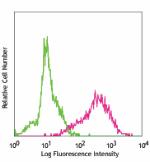
Mouse thymic epithelial stromal cell line TE-71 stained with... -
Purified anti-mouse Podoplanin
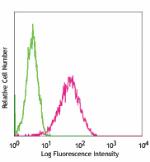
TE-71 cells stained with purified 8.1.1, followed by anti-Sy... 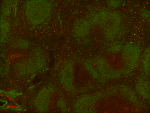
Fresh, frozen mouse spleen was stained with purified Podopla... 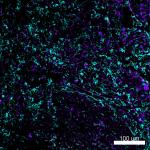
Mice were injected subcutaneously with sheep red blood cells... -
Alexa Fluor® 488 anti-mouse Podoplanin
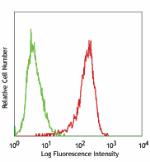
TE-71 mouse thymic epithelial stromal cell line stained with... -
PE anti-mouse Podoplanin
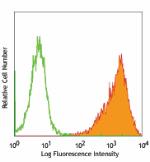
TE-71, mouse thymic epithelial stromal cell line, stained wi... -
APC anti-mouse Podoplanin

Mouse thymic epithelial stromal cell line TE-71 stained with... -
PE/Cyanine7 anti-mouse Podoplanin
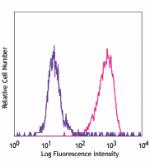
Mouse thymic epithelial stromal cell line TE-71 stained with... -
Alexa Fluor® 594 anti-mouse Podoplanin
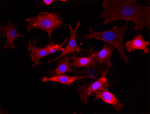
TE-71 mouse thymic epithelial stromal cell line cells were f... 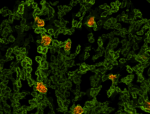
C57BL/6 mouse frozen kidney section was fixed with 4% parafo... -
FITC anti-mouse Podoplanin
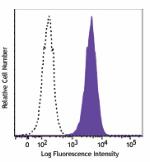
Mouse thymic epithelial stromal cell line TE-71 stained with... -
APC/Cyanine7 anti-mouse Podoplanin
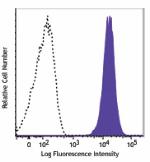
Mouse thymic epithelial stromal cell line TE-71 stained with... -
PE/Dazzle™ 594 anti-mouse Podoplanin
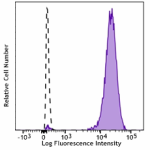
Mouse thymic epithelial stromal cell line TE-71 stained with... -
PerCP/Cyanine5.5 anti-mouse Podoplanin
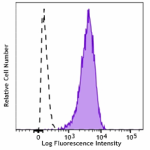
Mouse thymic epithelial stromal cell line TE-71 stained with... -
Brilliant Violet 421™ anti-mouse Podoplanin

Mouse thymic epithelial stromal cell line TE-71 stained with... -
TotalSeq™-A1035 anti-mouse Podoplanin
-
APC/Fire™ 750 anti-mouse Podoplanin
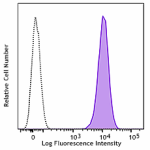
Mouse thymic epithelial stromal cell line TE-71 was stained ... -
TotalSeq™-C1035 anti-mouse Podoplanin
-
TotalSeq™-B1035 anti-mouse Podoplanin
 Login / Register
Login / Register 




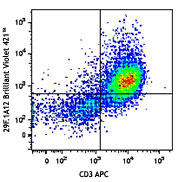
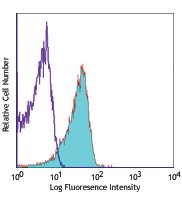
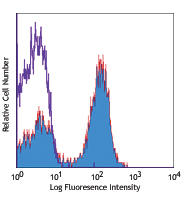
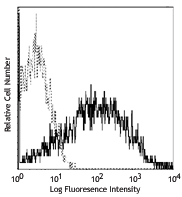



Follow Us